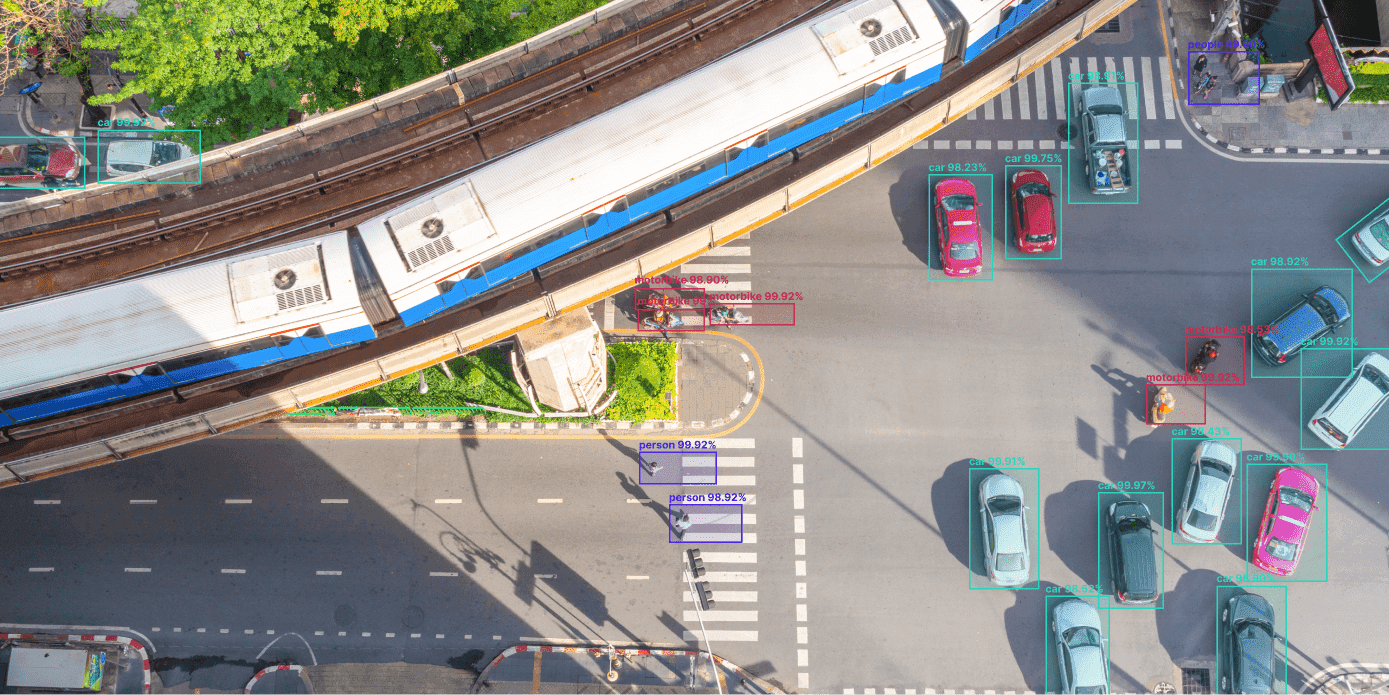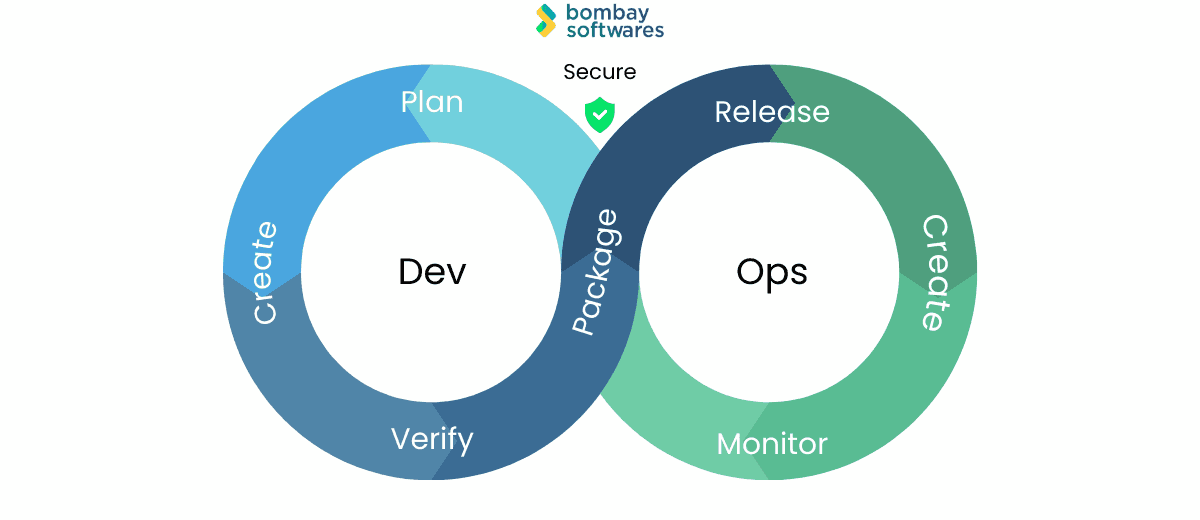- 9th May, 2024
- Aarav P.
Object Detection in 2024: The Ultimate Guide
3rd Jan, 2024 | Arjun S.
- Software Development

Image Source: Object Detection
Ever wondered how your smartphone recognizes faces in photos or how self-driving cars navigate through traffic seamlessly? The answer lies in a fascinating technology called object detection.
This blog will break down what object detection is, why it's crucial, how it works, and where we see it in our daily lives.
What is Object Detection?
Object detection is like a digital detective that identifies and locates objects in images or videos.
It goes beyond just recognizing what's present; it pinpoints where those things are. Imagine it as a super-smart detective, always on the lookout for specific objects in a vast sea of visual data.
So, how does this detective work?
Picture it as a virtual magnifying glass, scanning images pixel by pixel, and saying, "Hey, there's a person here!" or "Look, a cat in the corner!"
It's this ability to spot and classify various objects in a given scene that makes object detection a superhero in the world of technology.

Image Source: Object Detection
Why is Object Detection Important?
Now, you might be wondering, why it matters if our gadgets can identify objects.
Well, the applications are as diverse as they are exciting!
1. Revolutionizing Autonomous Vehicles
The rise of autonomous vehicles hinges on their ability to "see" and interpret their surroundings.
Object detection is the cornerstone of this capability, enabling self-driving cars to recognize pedestrians, other vehicles, and obstacles, ensuring a safer and more efficient transportation system.
2. Elevating E-commerce and Retail
Have you ever shopped online and wished you could find similar items effortlessly?
Object detection makes that wish a reality by enabling e-commerce platforms to recommend products based on visual similarities. In retail stores, it helps automate inventory management, reducing manual efforts and errors.
3. Advancing Healthcare
In the healthcare sector, object detection aids in medical imaging, assisting professionals in identifying and diagnosing conditions.
From detecting tumors in radiology images to monitoring the progression of diseases, this technology contributes significantly to improved patient care.
4. Streamlining Manufacturing Processes
Object detection enhances efficiency in manufacturing by automating quality control processes. It can identify defects or anomalies in products on the production line, ensuring that only high-quality items reach the consumers.
How does Object Detection Work?
Object detection is like teaching a computer to find and point out things in pictures or videos. There are a few main steps to make this happen:
1. Image Input
Object detection starts with feeding an image or video frame into the system. This could be from a camera, a satellite, or any other imaging source.
2. Feature Extraction
The system then analyzes the input to extract relevant features. These features could include edges, shapes, colours, or textures that help distinguish different objects.
3. Object Localization
Object localization involves identifying the location of objects within the image. This is usually done by drawing bounding boxes around the detected objects.
4. Object Classification
Once the objects are localized, the system classifies them into predefined categories. This is where the model determines what each object is based on the features it has extracted.
5. Post-Processing
Finally, the system refines the results and eliminates false positives, ensuring accurate and reliable object detection.

Image Source: Object Detection
Use Cases and Applications of Object Detection
Object detection is not merely a technological feat; it is a game-changer, providing solutions to challenges across diverse industries.
Let's embark on some captivating use cases, unveiling the incredible ways in which object detection is reshaping our world.
1. Enhancing Security and Surveillance
One of the primary applications of object detection is in security and surveillance systems. With advanced algorithms, these systems can detect and recognize objects or individuals in real-time.
Whether it's monitoring public spaces, airports, or sensitive areas, object detection helps identify potential threats, ensuring a proactive approach to security.
2. Autonomous Vehicles
Object detection plays a pivotal role in the development of autonomous vehicles. Cameras and sensors equipped with object detection algorithms enable vehicles to identify and track objects in their surroundings, making critical decisions to navigate safely.
This technology is fundamental in preventing collisions and ensuring the smooth operation of self-driving cars.
3. Retail and Inventory Management
In the retail industry, object detection is used to optimize inventory management and enhance the shopping experience. Smart shelves equipped with cameras can track product movements, monitor stock levels, and provide real-time analytics.
This helps retailers manage inventory efficiently, reduce theft, and improve the overall shopping experience for customers.
4. Healthcare and Medical Imaging
In the healthcare sector, object detection aids in medical imaging and diagnostics. Radiologists use these technologies to identify and analyze anomalies in X-rays, MRIs, and CT scans.
Early detection of diseases and abnormalities is crucial, and object detection algorithms contribute significantly to improving the accuracy and speed of medical diagnoses.
5. Industrial Automation
Object detection is a game-changer in industrial automation. Manufacturing processes benefit from computer vision systems that can identify defective products, track the movement of goods on production lines, and enhance quality control.
This leads to increased efficiency, reduced errors, and cost savings in the production process.
6. Smart Agriculture
In agriculture, object detection technologies help farmers monitor and manage crops more effectively.
Drones equipped with object detection algorithms can survey vast fields, identify crop health issues, and optimize resource allocation. This precision agriculture approach leads to increased yields and sustainable farming practices.
7. Augmented Reality (AR) and Gaming
Object detection contributes to the immersive experiences in augmented reality and gaming applications.
By recognising and tracking objects in the real world, AR applications can overlay digital information seamlessly. This enhances gaming experiences, navigation, and interactive storytelling in various industries.
Conclusion
Object detection propelled by the advancements in deep learning and segmentation, is not just a tech buzzword – it's changing the way machines interact with the world.
From making our roads safer to enhancing security and even improving healthcare, it's a tool that's making our lives better and more efficient.
As technology keeps getting better, we can only think about the exciting things that might happen in the future. It's like giving machines a superpower – the ability to 'see' and understand our world. And in this digital age, that's a power that's shaping the future.
FAQs
Q: What does object detection do?
A: Imagine a self-driving car needing to spot pedestrians and traffic signs, a doctor analyzing X-rays for abnormalities, or a robot sorting packages in a warehouse. Object detection powers these tasks by:
Identifying objects: Cars, people, animals, products, anything you can imagine!
Locating objects: Drawing bounding boxes around them, pinpointing their exact position.
Classifying objects: Recognizing different types of cars, people, or anything else relevant to the task.
Q: How accurate is object detection?
A: Accuracy depends on various factors like the model, training data, and image complexity. Modern models can be remarkably precise, even spotting tiny objects or dealing with blurry scenes.
However, challenges like occlusions (hidden objects) and lighting variations can still trip them up.
Q: Can I do object detection myself?
A: Yes, with the right tools and resources! Open-source libraries like TensorFlow and PyTorch provide tools to build and train your own object detection models.
Q: What is the future of object detection?
A: The future is bright! Expect to see:
Enhanced accuracy and robustness: Models will handle complex environments and diverse object appearances.
Contextual understanding: Models will go beyond identification, and understanding object relationships and interactions.
Real-time applications: Faster processing will enable real-time object detection in dynamic scenarios.
Personalization and adaptability: Models will personalize detections and adapt to user needs.
Integration with other AI: Object detection will collaborate with other AI fields like natural language processing for richer scene understanding.
More blogs in "Software Development"
- 8th Jun, 2024
- Aarav P.
Flutter App Development - Why You Should Choose Flutter?
- 19th Jun, 2023
- Rinkal J.
Role of DevOps in Modern IT Business Operations
Join our Newsletter
Get insights on the latest trends in technology and industry, delivered straight to your inbox.









